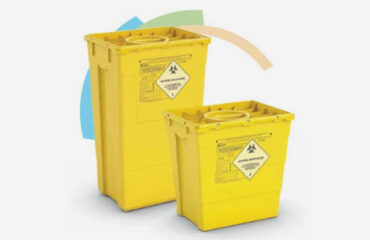The Best Strategy To Use For Reclaim Waste
The Best Strategy To Use For Reclaim Waste
Blog Article
Reclaim Waste Fundamentals Explained
Table of ContentsFascination About Reclaim Waste9 Simple Techniques For Reclaim WasteSee This Report on Reclaim WasteAbout Reclaim WasteExamine This Report about Reclaim Waste
Explore the types, incidents, and kinds of liquid waste. Domestic sewer waste refers to the waste and items from a household septic container. This sort of waste is developed by people in houses, institutions, and other structures. This only consists of septic containers that have a drain field. The appropriate administration and disposal of residential sewage waste call for fluid waste to be transferred to a sewer treatment plant where the appropriate methods and devices are used to cleanse and dispose of waste.
Industrial waste often includes prospective dangers, such as combustible products or a blend of fluid and solid waste products, and requires a much more advanced and comprehensive disposal procedure. The disposal of business waste typically includes the filtering of waste prior to transport to make certain safe and proper disposal. Industrial waste is produced from by-products and overflow of industrial processes and production.
This kind of waste can not use the exact same sewage administration transport or processes as septic or industrial liquids. The hazardous waste administration procedure calls for the inspection and testing of fluid waste before it goes through the disposal procedure (liquid waste disposal). Runoff waste is the fluid waste that comes from drainage and excess stormwater in very booming locations or cities
Drainage waste can create contamination and flooding otherwise taken care of correctly. Find out more about sewage system cleansing and waste administration. Making certain appropriate waste administration can prevent disasters and lower ecological damage. Both individuals in residential settings and experts in commercial or manufacturing sectors can profit from comprehending the processes and guidelines of fluid waste management.
Reclaim Waste Fundamentals Explained
Get in touch with PROS Services today to find out about our waste management and disposal solutions and the proper ways to look after the liquid waste you create.
(https://reclaim-waste-48112599.hubspotpagebuilder.com/reclaim-waste/expert-liquid-waste-removal-and-disposal-services-your-complete-guide)This so-called 'wastewater' is not just an essential source however, after treatment, will be launched to our land, waterways or the sea. Used water from bathrooms, showers, baths, kitchen area sinks, laundries and industrial procedures is understood as wastewater.

water used to cool down equipment or tidy plant and equipment). Stormwater, a type of wastewater, is drainage that streams from agricultural and urban areas such as roofings, parks, gardens, roads, courses and seamless gutters into stormwater drains pipes, after rainfall. Stormwater flows without treatment directly to local creeks or rivers, ultimately reaching the ocean.
Examine This Report on Reclaim Waste
In Queensland, most wastewater is treated at sewage treatment plants. Wastewater is moved from residential or industrial sites through a system of drains and pump stations, called sewerage reticulation, to a sewer therapy plant. City governments construct, keep and operate most sewage treatment plants. Operators are licensed under the Environmental Management Act 1994 to discharge cured wastewater at an appropriate ecological criterion right into rivers.
The Division of Natural Resources suggests neighborhood federal governments regarding managing, operating and maintaining sewage systems and therapy plants. In unsewered areas, regional governments may require householders to set up specific or family sewage therapy systems to deal with residential wastewater from commodes, kitchen areas, washrooms and laundries. The Department of Natural Resources authorizes using home systems when they are shown to be effective.
The majority of stormwater obtains no therapy. In some brand-new class, treatment of some stormwater to remove litter, sand and gravel has begun making use of gross toxin catches. Wastewater treatment takes place in 4 stages: Gets rid of strong matter. Bigger solids, such as plastics and various other objects wrongly released to sewers, are removed when wastewater is gone through screens.
Uses tiny living microorganisms knows as micro-organisms to damage down and eliminate continuing to be dissolved wastes and great particles. Micro-organisms and wastes are included in the sludge.
The 10-Second Trick For Reclaim Waste
Nutrient elimination is not readily available at all sewer treatment plants since it requires expensive specialised tools. Clear fluid effluent generated after treatment may still contain disease-causing micro-organisms - liquid waste removal.

A lot of wastewater streams into the sewage system. Under the Act, regional governments administer authorizations and permits for eco relevant activities (ERAs) entailing wastewater launches that may have a local influence.
The Single Strategy To Use For Reclaim Waste
Or else, examples are taken for lab evaluation. Frequently several tests are needed to develop the degrees of each of the various contaminants such as oils, hefty steels and pesticides in water. Tracking supplies valid information regarding water quality and can verify that permit problems are being satisfied. The information gotten through tracking provides the basis for making water high quality decisions.
Report this page